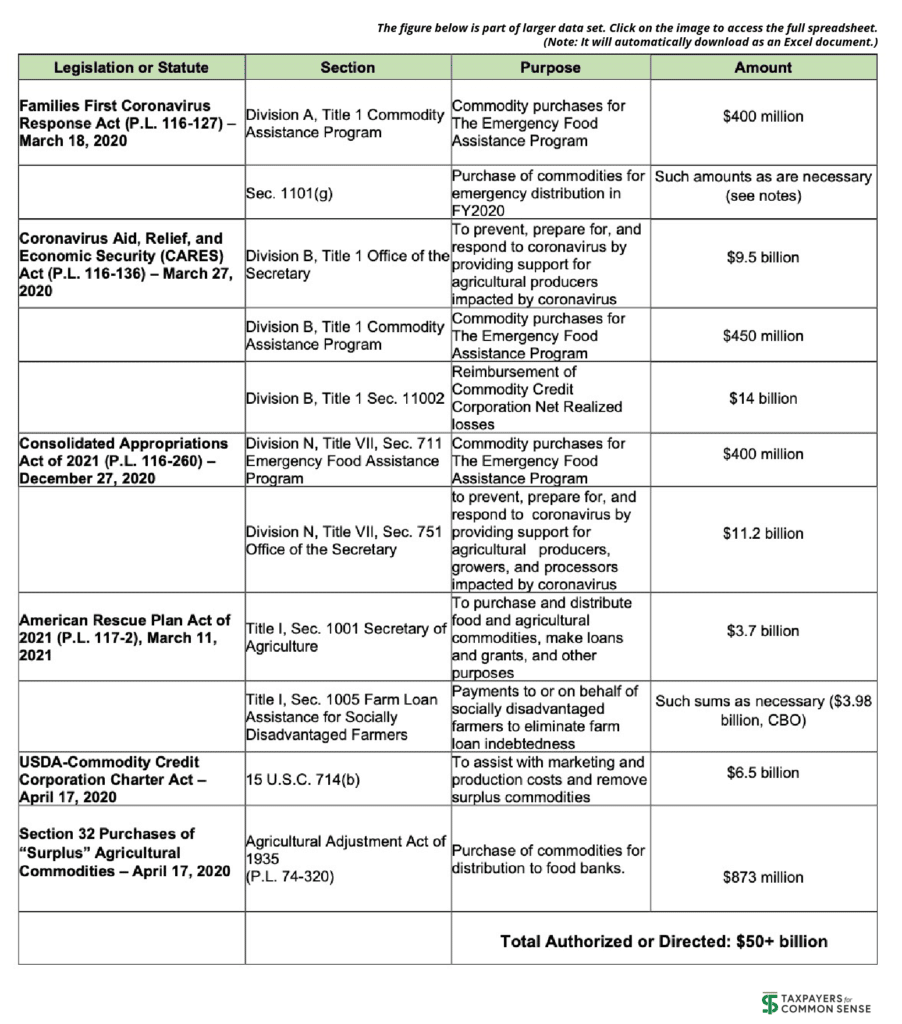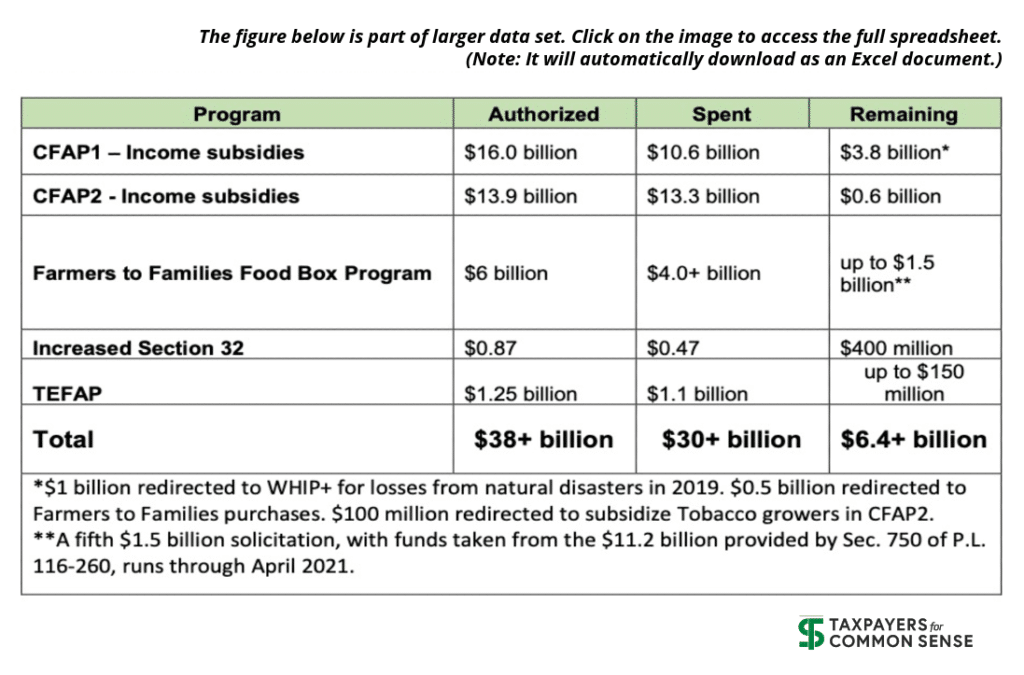(Note: The full dataset referred to in this post is available here as an automatic download.)
Washington’s response to the COVID-19 pandemic includes an unprecedented level of financial support for the agricultural sector. Over the course of 2020 and early 2021, Congress and the Department of Agriculture (USDA) directed over $50 billion to support farming and ranching operations impacted by COVID-19. USDA implemented this assistance primarily through income subsidies sent to farm owners and operators as well as directly purchasing various agricultural products. Improved market conditions in the fall of 2020 and innovations in operations and the supply chain resulted in agriculture, as a whole, avoiding the dire forecasts from spring of 2020. Sales from crops and livestock ended up dipping less than two percent from February 2020 forecasts, and government subsidies pushed net farm income to nearly $124 billion, the highest level since 2013. Despite this lack of economic harm, policymakers have provided USDA authority to direct billions of additional income subsidies to the agricultural sector.
**On March 24, 2021 the Biden Administration announced “Pandemic Assistance for Producers” an initiative to direct at least $14 billion in additional income subsidies to the agriculture sector.
Legislative and Statutory Actions in Response to COVID-19 and Agriculture
Federal policymakers responded to the economic uncertainty caused by COVID-19 by utilizing numerous tools to financially support the agriculture sector. These consisted primarily of “emergency” income subsidies to affected businesses, a new program to purchase and distribute commodities, and increased federal purchases in congressionally authorized nutrition programs. Legislative authority for these efforts derived from both emergency supplemental spending bills and existing statutes. For a detailed analysis of authorizations, outlays, and unobligated balances, see this table.
 Trump Administration Implementation of Aid
Trump Administration Implementation of Aid
USDA implemented pandemic financial assistance primarily by sending subsidy checks to agricultural businesses as part of the Coronavirus Food Assistance Program (CFAP). USDA used appropriated emergency funds to compensate businesses for income the USDA calculated was lost due to the pandemic. Commodity Credit Corporation funds were used to reimburse producers for increased marketing, handling, and disposal costs of excess crops and livestock. USDA also drastically increased government purchases of various crops and food products to reduce supplies and raise prices for agricultural products.
Additional Income Subsidies for Agriculture
The Biden Administration is currently contemplating how to provide additional assistance. In addition to the at least $4 billion in unobligated CFAP-1 and CFAP-2 funds, $9.7 billion is available from the Consolidated Appropriations act adopted in December 2020. Additional income subsidies were provided in the American Rescue Plan Act (ARP) adopted March 2021. USDA announced intentions to direct much of these funds as part of the Pandemic Assistance for Producers initiative (March 24, 2021)
- $3.80 billion | Unobligated CFAP-1 and CFAP-2
- $9.70 billion | Appropriated December 2020
- $3.60 billion | ARP Income Subsidies
- $3.98 billion | ARP Socially Disadvantaged Loan Forgiveness
$21+ billion in remaining funds
Pandemic Assistance for Producers – March 24, 2021
- $6.0 billion for new recipients not in CFAP1 or CFAP 2
- $1.1 billion in CFAP-1 bonus payments to cattle producers
- $4.5 billion in CFAP-2 bonus payments to row crop and livestock producers
- $TBD for CFAP-2 reopening sign up and implementation of additional assistance for various producers receiving subsidies in CFAP-1 (Trump Administration proposed $2.28 billion)
$14 billion or more committed by USDA
Conclusion
Income for farmers and ranchers has become highly subsidized. Redirecting funds to contract poultry producers, specialty crops, and other producers underserved by earlier CFAP rounds seems in the public interest. Expanding to new beneficiaries like agricultural processors (corn ethanol) or further subsidizing row crops, livestock, and dairy, which have disproportionately benefited from previous COVID-19–related funding, is not. Congress and the Biden Administration should focus aid on those who need it most and prioritize risk management instead of subsidies for those who benefit from an already generous agricultural safety net.











